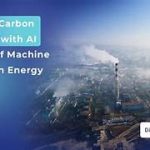AI-Driven Solutions for Optimizing Renewable Energy Output
The transition to renewable energy is vital for combating climate change and ensuring a sustainable future. Technologies such as solar, wind, and hydroelectric power are becoming increasingly mainstream, but their efficiency is often hindered by factors such as weather variability, energy storage challenges, and grid management issues. Artificial intelligence (AI) offers innovative solutions to optimize renewable energy output, enabling smarter generation, distribution, and storage.
The Renewable Energy Landscape
Renewable energy sources like solar and wind are inherently intermittent. Solar panels only generate power when the sun shines, and wind turbines rely on the presence of wind. These fluctuations make it challenging to match energy supply with demand. Moreover, integrating renewables into existing energy grids requires careful management to avoid instability and power outages.
To address these challenges, energy providers are increasingly turning to AI. By analyzing vast amounts of data, predicting trends, and automating decision-making, AI enhances the efficiency and reliability of renewable energy systems.
AI Applications in Renewable Energy Optimization
AI-driven solutions are transforming every aspect of the renewable energy lifecycle, from production to consumption. Here are key areas where AI is making a significant impact:
1. Predictive Analytics for Energy Generation
AI algorithms analyze weather data, historical energy production patterns, and other variables to forecast energy generation accurately. For example:
- Solar Power: AI models predict solar radiation levels based on weather patterns, cloud cover, and seasonal changes. This information helps optimize the positioning of solar panels and schedule maintenance during low-production periods.
- Wind Energy: AI systems assess wind speeds and directions to predict turbine output, ensuring efficient operation and reducing wear and tear.
2. Energy Storage Management
Efficient storage is essential for overcoming the intermittency of renewable energy. AI enhances battery management systems by:
- Predicting energy storage needs based on consumption patterns and generation forecasts.
- Optimizing charge and discharge cycles to prolong battery life and maximize efficiency.
- Coordinating energy storage with grid demand to ensure stability.
For example, Tesla’s Powerwall systems use AI to optimize home energy storage, allowing users to store solar energy for use during peak demand or power outages.
3. Smart Grid Integration
Integrating renewable energy into traditional power grids requires real-time management to balance supply and demand. AI-powered smart grids:
- Monitor energy flows and predict demand surges.
- Adjust energy distribution dynamically to prevent overloads or shortages.
- Enable decentralized energy systems where households and businesses with solar panels or wind turbines contribute surplus energy to the grid.
4. Fault Detection and Maintenance
AI enhances the reliability of renewable energy systems by predicting equipment failures and optimizing maintenance schedules. For instance:
- Machine learning algorithms analyze sensor data from wind turbines to detect anomalies, such as unusual vibrations or temperature changes, that indicate potential issues.
- Drones equipped with AI-powered image recognition inspect solar panels for damage or dirt accumulation, ensuring maximum efficiency.
5. Energy Consumption Optimization
AI helps consumers optimize their energy usage, reducing waste and lowering costs. Smart home systems, such as Google Nest, use AI to learn user behavior and adjust energy usage for heating, cooling, and lighting accordingly. These systems also integrate with renewable energy sources to prioritize the use of stored solar or wind power during peak demand.
Success Stories in AI-Driven Renewable Energy
Several organizations and projects have successfully implemented AI to optimize renewable energy output:
1. Google’s Renewable Energy Initiative
Google has integrated AI into its data centers to optimize energy use. By analyzing weather forecasts and historical data, Google’s AI predicts energy needs and shifts workloads to regions where renewable energy is most abundant. This strategy has enabled Google to operate on 100% renewable energy since 2017.
2. DeepMind and Wind Energy Optimization
DeepMind, Google’s AI subsidiary, partnered with wind farms to improve energy predictions. Using machine learning models, DeepMind predicts wind output 36 hours in advance, allowing energy providers to schedule power grid contributions more effectively. This initiative has increased wind energy value by approximately 20%.
3. Xcel Energy’s Smart Grid
Xcel Energy implemented AI-powered smart grid technology to integrate renewable energy sources into its system. The smart grid balances energy supply and demand in real-time, reducing reliance on fossil fuels and enhancing grid stability.
Challenges and Limitations
Despite its potential, AI-driven renewable energy optimization faces several challenges:
1. Data Quality and Accessibility
AI models require high-quality, real-time data to function effectively. In some regions, data collection infrastructure is limited, hindering AI’s ability to deliver accurate predictions.
2. High Initial Costs
Implementing AI systems involves significant upfront investment in technology, infrastructure, and expertise. Small-scale renewable energy providers may struggle to afford these costs.
3. Cybersecurity Risks
As AI integrates with energy grids and storage systems, it becomes a potential target for cyberattacks. Ensuring robust cybersecurity measures is essential to prevent disruptions.
4. Ethical and Regulatory Issues
The use of AI raises ethical questions about data privacy and decision-making transparency. Additionally, regulatory frameworks often lag behind technological advancements, creating uncertainty for energy providers.
The Future of AI in Renewable Energy
The future of AI-driven renewable energy optimization is promising, with several emerging trends:
1. AI and Blockchain Integration
Combining AI with blockchain technology can enhance transparency and security in renewable energy transactions. Blockchain enables peer-to-peer energy trading, allowing households with surplus solar power to sell directly to neighbors. AI ensures optimal pricing and distribution.
2. Advanced Weather Modeling
AI’s capabilities in weather modeling are expected to improve further, enabling even more accurate predictions of renewable energy generation. This will enhance planning and reduce energy waste.
3. Decentralized Energy Systems
AI will play a pivotal role in decentralized energy systems, where small-scale renewable energy producers contribute to local grids. These systems reduce transmission losses and promote energy independence.
4. AI-Driven Carbon Capture
Beyond optimizing renewable energy, AI can support carbon capture and storage technologies. Machine learning models can identify optimal locations for carbon capture facilities and monitor their efficiency over time.
Conclusion
AI-driven solutions are revolutionizing the renewable energy sector, addressing challenges of intermittency, grid integration, and storage. By leveraging predictive analytics, smart grids, and efficient maintenance systems, AI enhances the reliability and efficiency of renewable energy systems. While challenges remain, ongoing advancements in AI and supportive policies will drive the global transition to cleaner, more sustainable energy sources.
As renewable energy adoption grows, AI’s role will become even more critical, paving the way for a greener, more resilient future. By embracing AI, the energy sector can achieve significant milestones in the fight against climate change and progress toward a sustainable energy landscape.


